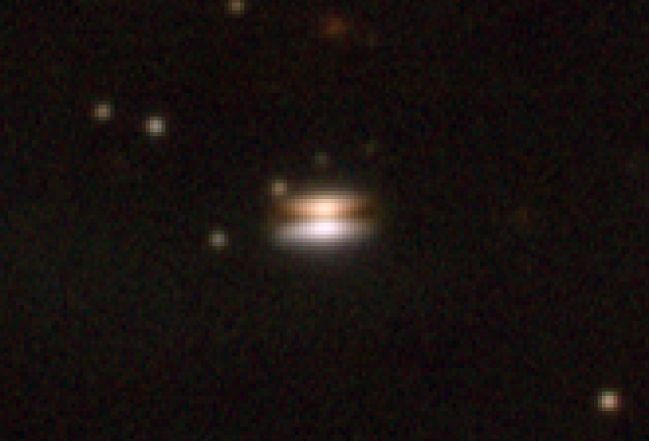Explanation: This infant solar system was discovered posing along the lonely outskirts of the Rho Ophiuchi dark cloud, a star forming region 500 light-years from Earth. Enlarged in this infrared false-color portrait from the European Southern Observatory's Antu telescope, the dark dusty disk of planet-forming material lies edge-on, neatly dividing two small nebulae which reflect light from a hidden, youthful central star. Enthusiastically nicknamed the "Flying Saucer", the circumstellar disk is about 300 astronomical units across (1 a.u. is the Earth-Sun distance) or about 5 times the diameter of Neptune's orbit. The twin reflection nebulae have clearly different colors for reasons which still remain a mystery, but the relatively isolated neighborhood of the natal solar system is a stroke of luck. Planets should be able to develop within the dusty disk free from the destructive influence of radiation and winds from any nearby massive hot stars usually found in young star clusters.
1999 2000 2001 2002 2003 2004 2005 2006 2007 2008 2009 2010 2011 2012 2013 2014 2015 2016 2017 2018 2019 2020 2021 2022 2023 2024 2025 |
Yanvar' Fevral' Mart Aprel' Mai Iyun' Iyul' Avgust Sentyabr' Oktyabr' Noyabr' Dekabr' |
NASA Web Site Statements, Warnings, and Disclaimers
NASA Official: Jay Norris. Specific rights apply.
A service of: LHEA at NASA / GSFC
& Michigan Tech. U.
|
Publikacii s klyuchevymi slovami:
circumstellar - dust - disk - zvezdnaya pyl' - disk, okolozvezdnyi - Solar System - planetnaya sistema
Publikacii so slovami: circumstellar - dust - disk - zvezdnaya pyl' - disk, okolozvezdnyi - Solar System - planetnaya sistema | |
Sm. takzhe:
Vse publikacii na tu zhe temu >> | |
